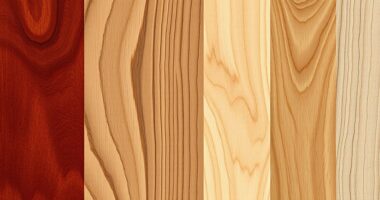Native New Zealand timbers like totara, kauri, and rimu offer unique qualities such as durability, rich grain, and striking colors. These woods hold great cultural, artistic, and ecological significance, shaping Māori traditions and colonial craftsmanship alike. Their versatility allows for advanced preservation techniques and innovative design applications. If you want to discover how these ancient materials continue to inspire sustainable creativity and craftsmanship, keep exploring the fascinating properties of these remarkable timbers.
Key Takeaways
- Native New Zealand timbers like totara, kauri, and rimu are prized for their durability, grain patterns, and warm, rich hues.
- These woods hold cultural significance for Māori, symbolizing land, heritage, and traditional craftsmanship.
- Their unique physical properties include resistance to pests, weathering, and high-density, making them ideal for long-lasting, functional applications.
- Advanced surface treatments and thermal modifications enhance their aesthetic appeal and environmental resilience.
- Sustainable harvesting and modern technology ensure the preservation of these timbers’ ecological and cultural value for future generations.
Indigenous Use and Cultural Significance of Native Woods

Native woods hold deep cultural and spiritual significance for Māori communities, who have long relied on them for various traditional practices. These native species, such as totara, rimu, and kauri, are more than just materials—they embody ancestral connections and land. Indigenous use of these woods includes carving, building wharenui, and crafting canoes, reflecting their importance in everyday life and ceremonial rituals. Māori select specific native species for their durability, beauty, and symbolic meaning, often embedding patterns that tell stories of ancestors. The harvesting of native woods is conducted with respect and tikanga, ensuring sustainability and honoring their cultural significance. These woods serve as enduring symbols of Māori identity, heritage, and their close relationship with the natural environment. Incorporating traditional knowledge and sustainable practices can help preserve these vital resources for future generations. Understanding the cultural significance of native timbers enhances appreciation and respect for Māori traditions, fostering a deeper connection to the land and its resources. Recognizing the ecological roles that native trees play in maintaining biodiversity is essential for their conservation. High Cultural Intelligence (CQ) can enhance understanding and respect for these traditional practices and their significance.
Colonial Craftsmanship and Decorative Applications

You notice how colonial cabinetmakers skillfully used native timbers like totara and kauri for veneering, slicing them into thin sheets to mimic European imports. Artisans such as Johann Levien incorporated these woods into decorative marquetry tables and sideboards that gained international fame. Their work blends European design with Māori craftsmanship, making native woods both beautiful and economically appealing in colonial New Zealand. Additionally, the use of natural materials contributed to the authenticity and durability of these decorative pieces. The techniques employed often reflected a fusion of styles, showcasing the adaptability of Māori artistry within colonial craft traditions. This blending of techniques highlights the technological advancements that enabled artisans to work with native woods more effectively. Moreover, the development of specialized tools facilitated the detailed work needed for intricate inlay and marquetry, demonstrating the technological progress of the period.
Native Timber Veneering Techniques
During the colonial period, artisans mastered veneering techniques that transformed native New Zealand timbers like totara, kauri, and rewarewa into decorative layers for furniture and art. By slicing native timber into thin sheets, they created veneers that showcased the figured grain and unique patterns of indigenous materials. These veneering techniques allowed you to emulate European craftsmanship affordably, applying native timber layers onto substrates to mimic high-end furniture styles. Skilled artisans often incorporated intricate marquetry, blending Māori motifs, native flora, and fauna into their designs. Gluing, slicing, and pressing native timber sheets onto surfaces became standard practice, resulting in striking decorative effects. This fusion of colonial craftsmanship with indigenous materials elevated native timbers, highlighting their beauty and cultural significance in furniture and decorative arts. Additionally, advancements in veneering techniques during that era enabled the production of more durable and aesthetically pleasing decorative surfaces. The development of adhesion methods further improved the durability and finish quality of veneered surfaces, ensuring their longevity over time. Moreover, the introduction of finishing processes enhanced the visual appeal and protective qualities of the veneered layers, making them suitable for a variety of decorative applications. Incorporating innovative tools helped artisans achieve finer details and more consistent results in their veneering work.
Artisans’ Decorative Styles
Artisans during the colonial era skillfully applied native New Zealand timbers like totara, kauri, and rewarewa to furniture and decorative objects, creating striking surfaces that highlighted the woods’ natural beauty. Their decorative styles emphasized craftsmanship, blending traditional European techniques with indigenous motifs. Native timbers such as puriri and kohekohe were used in marquetry and inlay work, often depicting Māori symbols, flora, and fauna, reflecting cultural significance. Artisans like Johann Levien incorporated native woods into European-style furniture, including marquetry tables and sideboards, earning international recognition. The use of native timbers in decorative furniture offered an affordable alternative to imported woods, enabling settlers to craft high-quality, locally made art pieces. Additionally, advancements in woodworking techniques allowed artisans to achieve intricate detailing and durability, further enhancing the aesthetic and functional qualities of their creations. These techniques resulted in intricate, durable, and visually compelling objects that remain valued today, demonstrating the cultural importance of native woods in New Zealand’s artistic heritage. Moreover, the integration of native timbers into colonial craftsmanship not only showcased their aesthetic appeal but also contributed to the development of a distinct New Zealand style. Furthermore, understanding the craftsmanship techniques used by colonial artisans helps appreciate the enduring beauty and significance of these native timbers in contemporary design.
Notable Artisans and International Recognition

In the 19th century, New Zealand craftsmen achieved notable international recognition for their mastery of native timber, transforming colonial furniture into works of art. Anton Seuffert’s marquetry pieces, featuring Māori motifs and native flora, earned him a Royal Appointment in 1869, showcasing his exceptional artisan skills and blending native woods with European influence. William and Robert Norrie, in the 1880s, gained export success by veneering furniture with totara and kauri, competing with imported English woods. Their work, along with pieces like a totara Renaissance revival sideboard, was celebrated in exhibitions, elevating New Zealand’s colonial furniture to a level comparable with European high-class craftsmanship. This recognition helped establish native timber artisans on the international stage, highlighting their skill and cultural significance. Additionally, the development of craftsmanship and artistic techniques contributed significantly to the global appreciation of New Zealand’s native timbers. The use of innovative design methods further distinguished their work and promoted a deeper understanding of native materials’ aesthetic value. Moreover, the emphasis on sustainable forestry practices in the period supported the preservation and continued use of native timbers for artistic purposes. Recognitions like these fostered a cultural identity that celebrated local resources and craftsmanship, reinforcing New Zealand’s artistic reputation. The integration of traditional techniques with emerging artistic innovations allowed artisans to push the boundaries of design and craftsmanship, solidifying New Zealand’s reputation in the arts.
Economic and Export Value of Native Timber Work
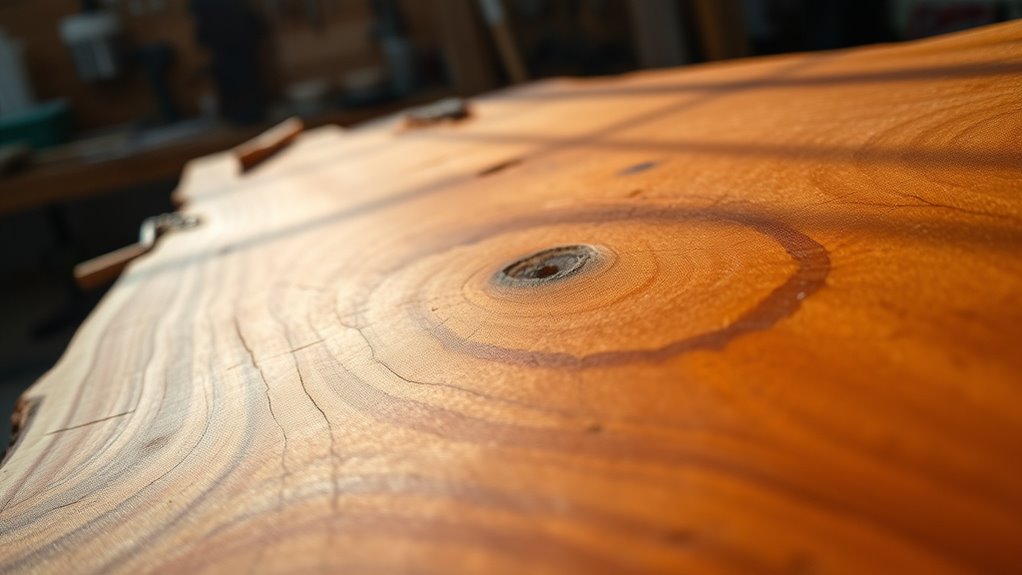
Native New Zealand timbers like totara, kauri, and puriri have played a vital role in the country’s colonial economy through their export to Australia and England. These native timbers profoundly boosted export revenues and showcased New Zealand craftsmanship. Colonial furniture and decorative arts made from native timber were highly sought after internationally, adding to their economic value. Artisans such as Anton Seuffert gained global recognition for native timber marquetry, elevating New Zealand’s reputation. Today, native timber artifacts continue to hold economic and cultural importance, with collections like those at Te Papa highlighting their ongoing value.
- Boosted export revenues from colonial furniture
- Increased international demand for native timber crafts
- Elevated New Zealand’s global craftsmanship reputation
- Provided cost-effective, decorative veneers
- Maintained cultural significance through ongoing exports
Varieties of Native Timbers and Their Unique Characteristics
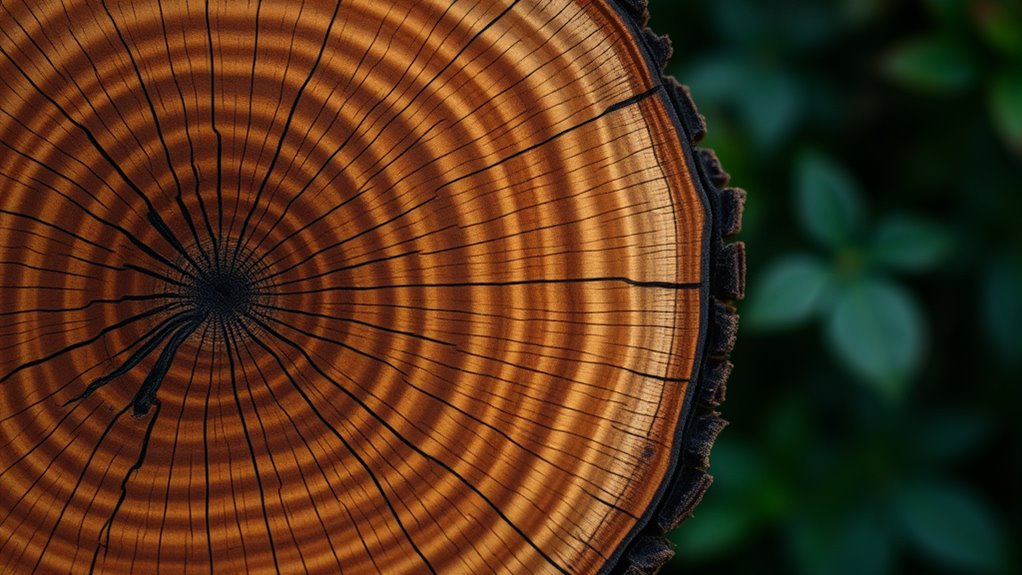
New Zealand’s native timbers each have unique qualities that make them highly valued for different crafts. As you explore timber species like totara, kahikatea, rimu, and matai, you’ll notice their distinct grain patterns, colors, and textures. Totara offers a fine grain, durability, and a warm reddish-brown hue, making it perfect for furniture and Māori carvings. Kauri timber stands out with its large size, straight grain, and rich golden color, historically used in architecture and fine woodworking. Rimu features a reddish-brown tone with an even, fine grain, ideal for furniture, cabinetry, and veneers. Matai is dense, dark, and highly durable, often chosen for boat building, flooring, and structural uses. Understanding these timber species helps you select the right wood for your project.
Aesthetic Qualities and Surface Treatments of Native Woods
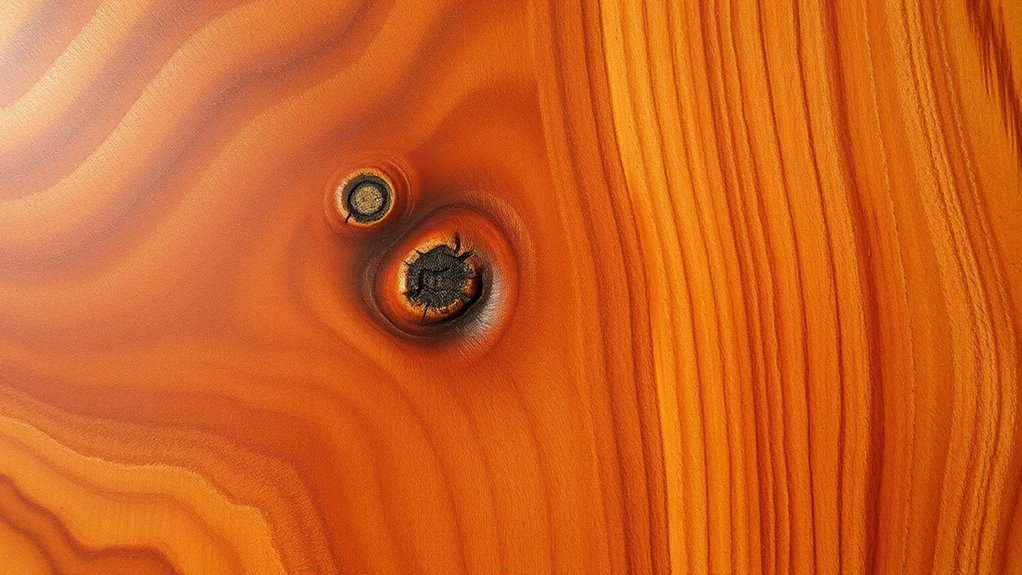
The rich, warm hues and distinctive grain patterns of woods like Rimu and Kauri considerably enhance their visual appeal in furniture and decorative arts. These native timbers’ unique grain patterns add character and depth, making each piece truly one-of-a-kind. Surface treatments such as staining, polishing, and sealing help accentuate the natural colour and grain, highlighting their visual qualities. Thermal modification can deepen the hue and provide a subtle matte finish, boosting warmth and durability. Because native timbers absorb stains effectively, you can achieve a variety of decorative effects with ease. To maximize their aesthetic potential, consider these surface treatments:
- Staining to enhance grain contrast
- Polishing for a smooth, reflective surface
- Sealing for protection and sheen
- Thermal modification for colour depth
- Finishing touches to emphasize natural beauty
Advances in Timber Preservation and Durability
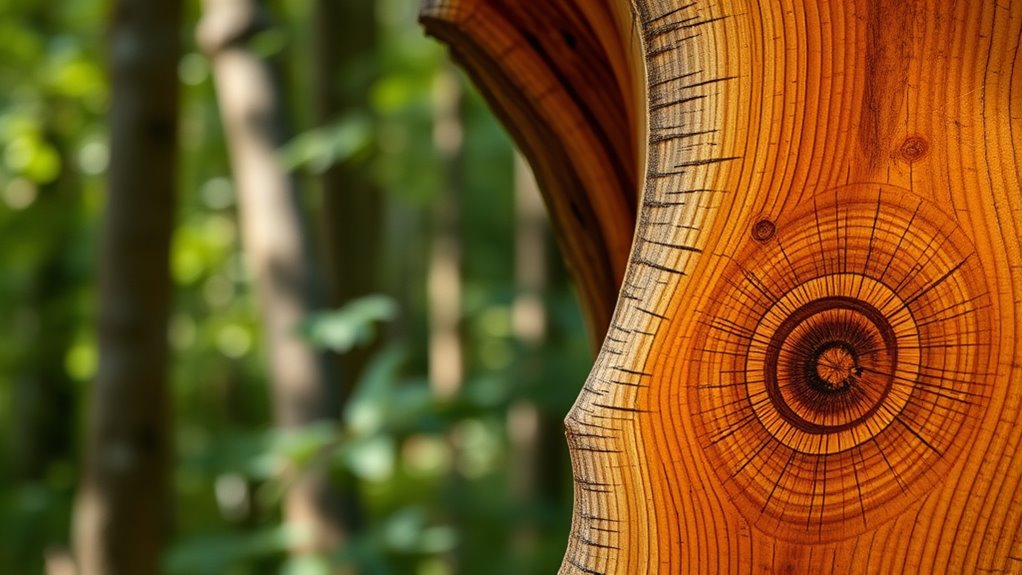
Recent advancements in timber preservation techniques have markedly extended the lifespan and performance of native New Zealand woods. Thermal modification of species like radiata pine boosts durability and weather resistance without chemicals, though it can reduce mechanical strength. Densification processes, which involve heat and pressure, more than double surface hardness in woods like poplar, making them suitable for structural uses and wear-resistant surfaces. Proper treatment and surface finishing, such as clear polymer coatings, protect native timbers from moisture, decay, and insects—especially outdoors or in humid conditions. Innovations in thermal and chemical treatments now enable woods like kauri and totara to meet modern durability standards, broadening their architectural and furniture applications. Ongoing research focuses on eco-friendly preservation methods to enhance native timber durability while preserving their aesthetic and cultural qualities.
Modern Uses and Sustainable Sourcing Practices
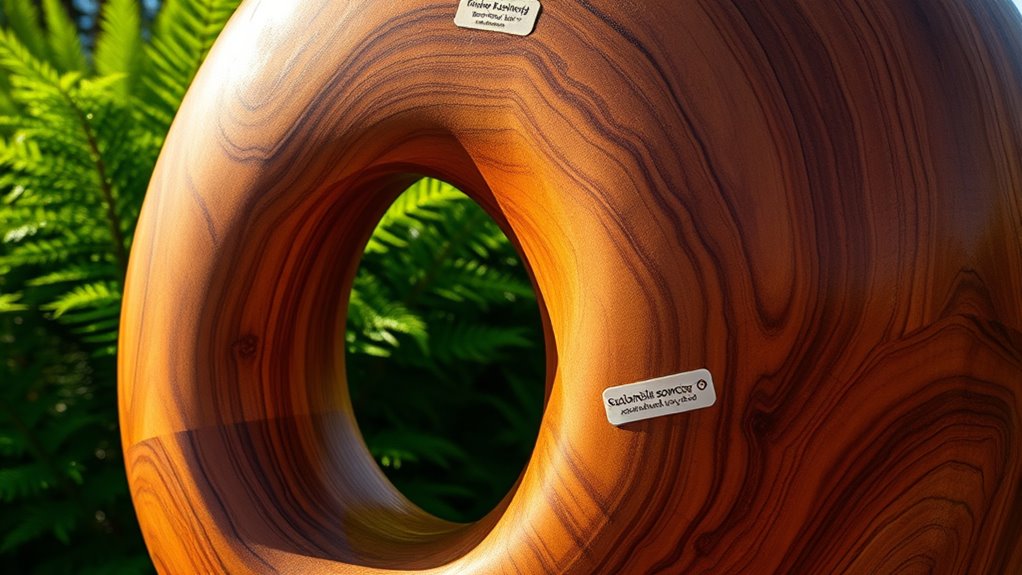
Have you considered how sustainable sourcing practices are transforming the use of native New Zealand timbers? Increasingly, responsible harvesting, replanting, and ecological management guarantee these beautiful woods remain available for future generations. Certification schemes like FSC and PEFC verify sustainable forestry, promoting eco-friendly procurement. Modern processing techniques, including controlled pruning and selective logging, help maintain forest health while providing high-quality timber. Additionally, the use of reclaimed and recycled native timbers is gaining popularity, reducing pressure on natural forests and supporting circular economy principles. These sustainable sourcing efforts enable the integration of native timbers into innovative applications such as:
- Eco-friendly furniture
- Green building materials
- Ecological design projects
- Contemporary architectural features
- Custom craftsmanship
Native Timber Collections and Preservation Efforts
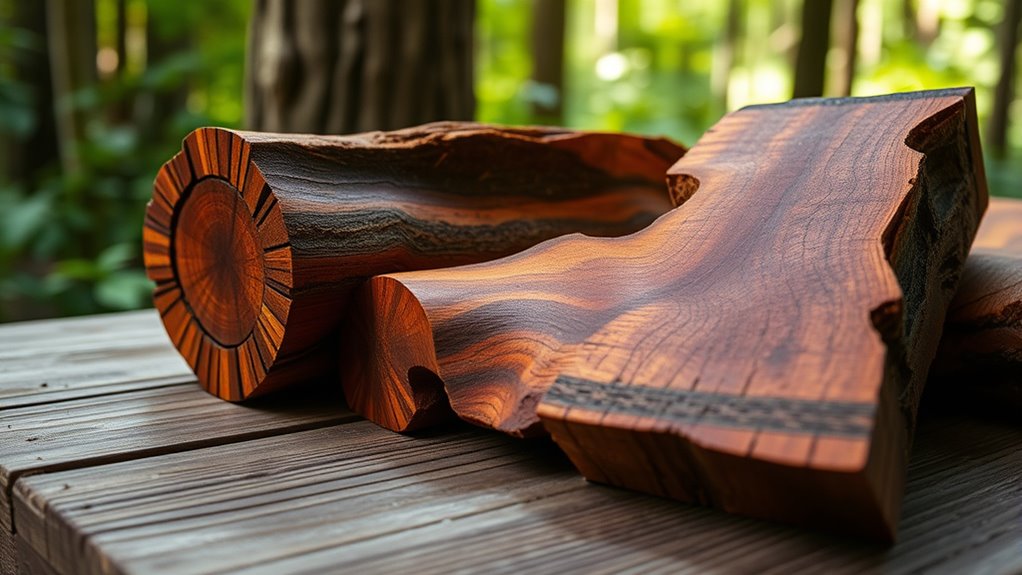
Native timber collections in New Zealand highlight the country’s rich ecological and cultural heritage, featuring species like totara, rimu, kauri, kohekohe, and matai, each prized for their unique properties. Preservation efforts focus on sustainable harvesting, replanting programs, and conservation initiatives to protect iconic wood species like Kauri and Totara from over-exploitation and disease. Te Papa and other cultural institutions curate extensive collections of native timber artifacts, showcasing traditional Māori craftsmanship and colonial furniture made from local woods. Supporting local industries, these native timbers are highly regarded for their strength, resilience, aesthetic appeal, and resistance to decay. Available in New Zealand, they meet modern building code standards, with heartwood and sapwood offering a range of natural tones from pale white to rich hues, emphasizing their durability and cultural significance in direct competition with imported woods.
Future Directions for Native Timber Innovation
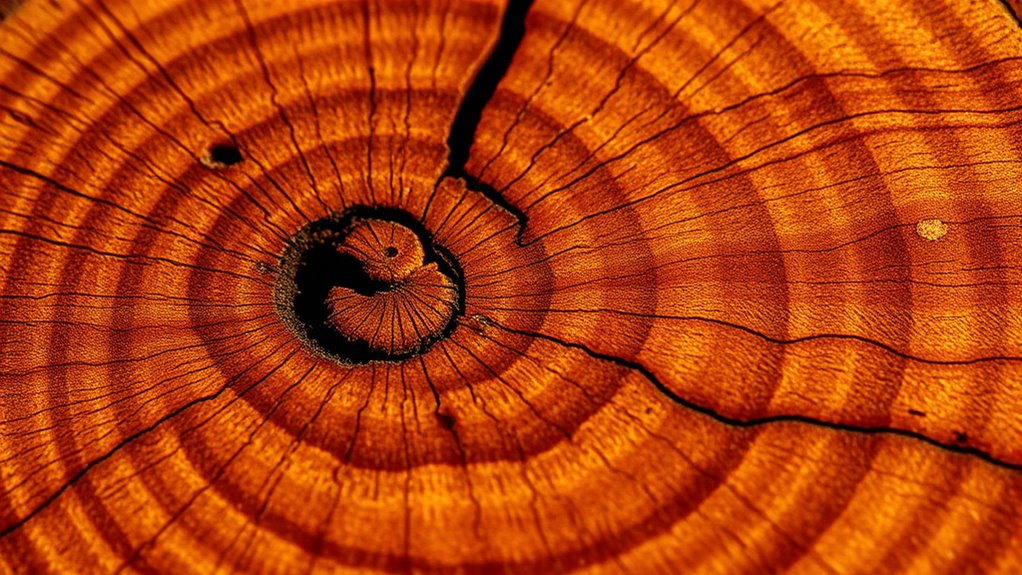
Future innovations in native timber focus on sustainable harvesting methods to guarantee long-term resource health. Advanced veneering techniques are expanding design possibilities while eco-friendly treatments improve durability without harming the environment. Exploring these areas can open new applications and strengthen the cultural and economic value of New Zealand’s timbers.
Sustainable Harvesting Methods
Innovative sustainable harvesting methods are shaping the future of native New Zealand timber management by integrating advanced technology and community-based practices. You play a crucial role in guaranteeing these methods protect ecosystems and cultural values. Sustainable harvesting employs quota systems, seasonal restrictions, and selective logging to prevent overexploitation. Māori and local communities actively participate, emphasizing respect for cultural and ecological balance. Advances in silvicultural techniques, like regeneration planting and pest management, support ongoing forest health. Certification schemes such as FSC and PEFC promote responsible sourcing and traceability. Ecological monitoring and remote sensing technologies enable real-time forest health assessments, guiding harvest decisions. By embracing these practices, you help secure a sustainable future for native New Zealand timbers.
- Quota systems prevent overharvesting
- Seasonal restrictions protect wildlife
- Selective logging minimizes ecological impact
- Community involvement ensures cultural respect
- Technology aids real-time forest monitoring
Advanced Veneering Techniques
Building on sustainable harvesting methods that prioritize ecological and cultural integrity, advanced veneering techniques are opening new horizons for native New Zealand timber applications. These advanced methods, such as laser-cut marquetry and computer-controlled lamination, allow you to create precise, intricate native timber inlays that expand design possibilities. Modern adhesives, including eco-friendly resins and UV-cured glues, enhance the stability and durability of veneers in furniture and art. Densification and thermal modification improve surface hardness and resistance, enabling new structural uses. Digital modeling and CNC machining facilitate complex native timber patterns, reducing waste and ensuring consistency in artisanal and industrial products. These innovations support the development of sustainable, multifunctional native timber surfaces, pushing the boundaries of what’s possible with native New Zealand timbers.
Eco-Friendly Treatment Innovations
How can eco-friendly treatment innovations revolutionize the use of native New Zealand timbers? By reducing reliance on harmful chemicals, these treatments improve durability, weather resistance, and aesthetic appeal sustainably. Techniques like thermal modification and mechanical densification strengthen native woods such as matai and poplar, making them harder and more resilient. Advances in bio-based preservatives and natural resin coatings further promote eco-friendly solutions, extending timber lifespan without environmental harm. Combined treatments, like heat and compression, boost surface hardness and structural performance, opening new applications. Future innovations aim to optimize these methods, balancing ecological sustainability with enhanced mechanical properties. Here’s what eco-friendly treatment innovations offer:
- Improved durability without harmful chemicals
- Enhanced weather resistance naturally
- Increased surface hardness and strength
- Expanded aesthetic options through darkening processes
- Broader sustainable timber applications
Frequently Asked Questions
What Timbers Are Native to New Zealand?
You’re asking about the native timbers of New Zealand. You’ll find species like kauri, rimu, totara, matai, kohekohe, and rewarewa. Kauri is known for its size and golden hue, perfect for carvings. Rimu has striking reddish-brown grain, ideal for furniture. Totara is durable and warm-colored, often used in Māori crafts. Each timber offers unique qualities suited to various traditional and modern uses.
What Is the Most Commonly Used Exotic Timber for Construction in New Zealand?
You’re asking about the most commonly used exotic timber for construction in New Zealand. The answer is Radiata pine, which, despite being native, is often considered exotic because of its plantation status and widespread use. It’s favored for its lightweight, ease of working, and good strength, making it a popular choice in structural applications. Its affordability and availability also contribute to its popularity in the local construction industry.
What Is the Hardest NZ Native Timber?
Imagine holding a fortress built from the toughest native timber—this is Puriri. It stands as the hardest NZ native timber, with a Janka hardness exceeding 3,000 pounds-force, resisting dents and wear like a knight’s armor. Matai comes close, but Puriri’s strength truly dominates, making it ideal for demanding applications. If strength and resilience are your goals, Puriri’s your champion among New Zealand’s native woods.
What Are the Two Types of New Zealand Native Timbers That Can Be Used for High Quality Furniture?
You’re asking which two native New Zealand timbers are ideal for high-quality furniture. Kauri and Rimu stand out because of their durability, stunning grain patterns, and versatility. Kauri’s fine grain and rich golden hue make it perfect for intricate carvings, while Rimu’s reddish-brown color and straight grain suit both traditional and modern designs. Both are sustainably sourced, making them excellent choices for premium furniture that combines beauty and strength.
Conclusion
As you explore New Zealand’s native timbers, imagine running your fingers over their rich, textured grains, each telling a story of cultural pride and natural beauty. These woods, resilient and unique, stand as living monuments to craftsmanship and tradition. By embracing sustainable practices, you help preserve this treasure, ensuring their vibrant legacy endures like the timeless forests themselves—steadfast, beautiful, and full of life for generations to come.



